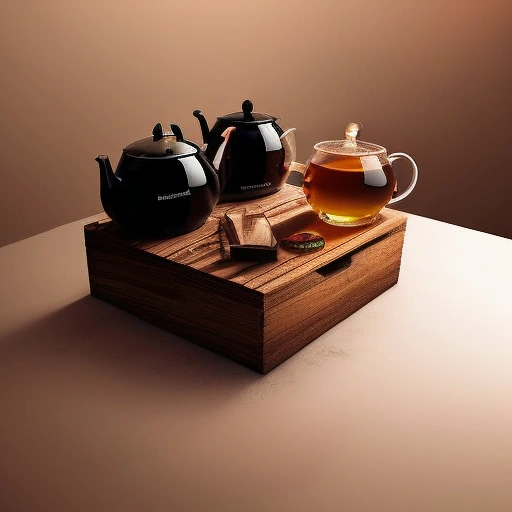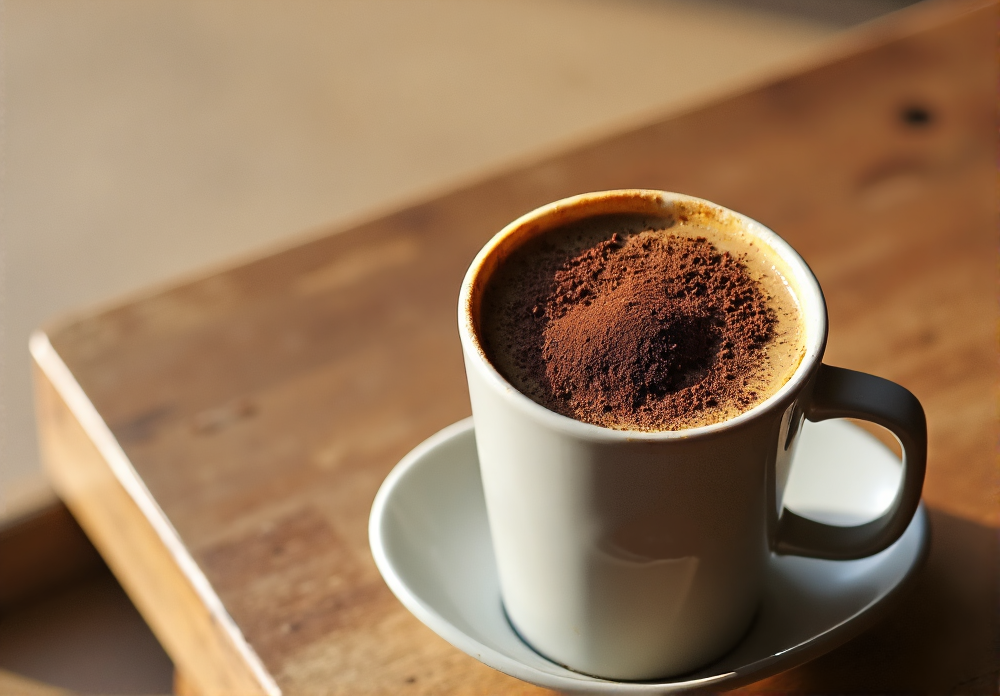The Art and Science of Tea Preservation
The ritual of tea, steeped in history and culture, is more than just a beverage; it’s an experience—a moment of quiet contemplation, a social gathering, or a simple daily pleasure. From the delicate unfurling of a silver needle white tea to the robust earthiness of a pu-erh, each variety offers a unique sensory journey, a testament to the diverse terroirs and meticulous processing techniques that shape its character. Yet, the ephemeral nature of tea, its inherent susceptibility to light, moisture, and ambient odors, necessitates careful consideration of tea storage.
Neglecting this crucial aspect of tea preservation can lead to a disappointing brew, robbing you of the nuanced tea flavor profiles and captivating tea aromas that make tea so captivating. In essence, proper tea storage is not merely about containment; it’s about safeguarding an investment in quality and experience. In the realm of home organization, tea storage often becomes an overlooked element. However, efficient tea organization can transform a cluttered pantry into a streamlined space, making your favorite blends readily accessible and visually appealing.
Consider the visual impact of neatly arranged tea caddies on open shelving or the space-saving benefits of stackable tea containers in a compact kitchen. From a food preservation standpoint, understanding how to protect tea from degradation is paramount. Factors such as humidity can wreak havoc on tea freshness, leading to mold growth or a musty taste. Vacuum sealed containers and humidity controlled storage offer advanced solutions, extending the shelf life and maintaining the integrity of even the most delicate tea varieties.
For the smart kitchen enthusiast, these technologies represent a fusion of tradition and innovation, ensuring that every cup is as exquisite as intended. Moreover, selecting the right tea container is crucial for optimal tea preservation. The ideal tea caddy not only shields the leaves from external elements but also complements your personal style and kitchen décor. Options range from classic ceramic jars to sleek, modern stainless-steel canisters, each offering a unique blend of aesthetics and functionality.
Consider the material’s impact on flavor; for instance, some porous materials may absorb and transfer odors, affecting the tea’s delicate aroma. Investing in high-quality tea storage solutions, such as airtight glass jars with UV protection or specialized tea tins with inner linings, is a testament to your commitment to preserving the integrity of your tea collection. Ultimately, the goal is to create a storage environment that mimics the conditions in which the tea was originally processed and packaged, ensuring a consistently delightful brewing experience.
As consumer guides increasingly emphasize sustainability and eco-consciousness, consider the environmental impact of your tea storage choices. Opt for reusable and recyclable materials whenever possible, reducing your reliance on single-use packaging. Explore innovative options such as bamboo tea containers or compostable storage bags, which align with a zero-waste lifestyle. Furthermore, proper tea storage extends beyond the kitchen; consider designated areas in your pantry or cabinets specifically designed for tea organization. By implementing these strategies, you not only enhance the longevity of your tea but also contribute to a more sustainable and organized home environment. In this comprehensive guide, we’ll explore innovative and practical tea storage solutions to ensure your cherished leaves remain at their peak, from the pantry to the palate.
Understanding the Fundamentals: Light, Air, Moisture, and Heat
The enemies of tea are well-defined: light, air, moisture, and heat. Exposure to any of these elements can trigger oxidation, leading to a loss of flavor, aroma, and even beneficial compounds that contribute to tea’s health benefits. Therefore, the ideal tea storage container should be opaque, airtight, and kept in a cool, dry place, ideally away from strong-smelling foods that could leach into the tea leaves. This careful approach to tea preservation ensures that each cup delivers the intended sensory experience, from the first whiff of the dry leaves to the lingering aftertaste.
Failing to adhere to these principles can result in a dull, lifeless brew, a disappointing outcome for any tea enthusiast. Proper tea storage, therefore, is not merely about organization; it’s about safeguarding quality and maximizing enjoyment. Traditional tea caddies, often made of tin or ceramic, have long been a favored choice for tea storage. Their opaque nature shields the leaves from light, while a tight-fitting lid minimizes air exposure. However, not all tea caddies are created equal.
Look for those with a rubber seal or double-lid system to ensure a truly airtight environment, especially when dealing with delicate teas. Vintage tea tins can be charming, but may not provide adequate protection if the seals are worn or missing. Glass jars, while aesthetically pleasing and useful for pantry organization, are generally not recommended unless stored in a dark cupboard, as they offer no protection from light, a critical factor in maintaining tea freshness.
Beyond simply avoiding the core enemies of tea, consider the specific environment where your tea is stored. Kitchens, while convenient, often experience fluctuations in temperature and humidity due to cooking. A pantry or a dedicated tea station in a cooler, drier area of the home is preferable for long-term tea preservation. Furthermore, consider the proximity of your tea to other strong-smelling items. Tea leaves can absorb odors, so storing them near spices or coffee could compromise their delicate aroma and flavor profile.
Careful tea organization, therefore, extends beyond the container itself and encompasses the surrounding environment. For those serious about tea preservation, monitoring humidity levels within the tea container itself is an option. Small, reusable desiccant packets can be placed inside the tea caddy to absorb excess moisture. These packets, often made of silica gel, can be dried out in an oven or microwave when saturated and reused indefinitely. This approach is particularly beneficial in humid climates or for storing teas that are especially sensitive to moisture, such as certain green teas and delicate white teas. Integrating humidity control into your tea storage strategy demonstrates a commitment to preserving tea freshness and ensuring optimal flavor with every brew. Vacuum sealed containers, while more modern, take this concept a step further.
Modern Marvels: Vacuum Sealing and Humidity Control
Beyond traditional tea caddies, a new generation of smart tea storage solutions is emerging, leveraging technology to enhance tea preservation. Vacuum-sealed containers offer an unparalleled level of protection for maintaining tea freshness by removing nearly all air, significantly slowing down the oxidation process. These containers are particularly beneficial for delicate teas like green tea and white tea, which are more susceptible to degradation and loss of tea aroma and tea flavor. Investing in a quality vacuum sealed container can extend the shelf life of these teas, preserving their nuanced characteristics for a more satisfying brewing experience.
This is a prime example of smart kitchen technology applied to food preservation, ensuring optimal enjoyment of your tea collection. From a home organization perspective, these containers also offer a sleek and stackable storage solution, maximizing pantry space. Another innovative option gaining traction, particularly among tea connoisseurs and retailers specializing in aged teas like pu-erh, is humidity controlled storage. While sophisticated humidity-controlled storage cabinets aren’t yet widely available or affordable for most home consumers, they represent the pinnacle of tea preservation.
These specialized units maintain precise temperature and humidity levels, creating an environment that encourages beneficial microbial activity in aged teas while preventing mold growth and other forms of spoilage. This level of control is crucial for teas that evolve over time, allowing their flavors to deepen and mature under carefully managed conditions. For the average tea enthusiast, understanding the principles behind humidity control can inform simpler strategies, such as avoiding storing tea near sources of moisture like dishwashers or sinks.
For most home consumers focused on tea organization and maintaining tea freshness, practical solutions are readily available. Storing tea in a cool, dry pantry or cabinet away from heat sources like ovens and stoves remains a sound strategy. Consider using airtight tea containers made of opaque materials like ceramic or stainless steel, as these minimize exposure to light, air, and moisture. Regularly check your tea for any signs of staleness, such as a loss of aroma or a dull appearance. By implementing these simple yet effective tea storage practices, you can significantly extend the life of your favorite teas and ensure a consistently delightful brewing experience. Furthermore, proper tea storage contributes to overall food preservation efforts in the kitchen, reducing waste and maximizing the value of your pantry staples.
Material Matters: Choosing the Right Container Composition
The material of your tea storage container also plays a critical role in preserving tea freshness. Tin is a time-honored choice, lauded for its opacity which effectively blocks light, and its inherent ability to minimize odor transfer. However, it’s crucial to select high-quality, food-grade tin tea caddies, as some lower-quality options may impart a metallic taste to the tea, particularly if the protective lining is scratched or worn. For example, cheaper, imported tins might use a thinner lining that degrades quickly, while reputable brands often employ multiple layers of food-safe lacquer to prevent any interaction between the metal and the tea leaves, ensuring optimal tea preservation.
Ceramic containers, especially those with a tight-fitting lid and a food-safe glaze, are another excellent option for tea storage. The glaze creates a non-reactive, neutral environment that won’t affect the tea’s delicate tea aroma or tea flavor. Unlike some metals, ceramic is also naturally resistant to absorbing odors, making it ideal for storing different types of tea without cross-contamination. Look for ceramic tea containers specifically designed for food storage, ensuring they are lead-free and cadmium-free.
Many tea aficionados prefer ceramic for storing more delicate teas like white or green tea, as the neutral environment helps maintain their subtle nuances. Conversely, avoid storing tea in plastic containers whenever possible. Most plastics are porous and can absorb ambient odors, which will inevitably transfer to your tea leaves, compromising their intended flavor profile. Furthermore, some plastics may leach chemicals, especially when exposed to temperature fluctuations, potentially affecting the tea’s quality and safety. Similarly, avoid storing tea near strong-smelling substances like spices, coffee, or cleaning products. Tea leaves are highly absorbent and will readily soak up surrounding aromas, resulting in a less-than-desirable tea experience. Proper tea organization also means keeping your tea container away from direct sunlight and heat sources, such as ovens or stovetops, to maintain tea freshness. Investing in a vacuum sealed container or a humidity controlled storage system can further enhance tea preservation, especially for larger quantities or more delicate tea varieties.
Elevating the Tea Experience: A Final Brew of Wisdom
Ultimately, the best tea storage solution is one that aligns with your consumption habits and the types of tea you enjoy. If you frequently brew delicate green teas or the nuanced flavors of white tea, investing in a vacuum-sealed container is a worthwhile investment to safeguard their subtle notes. For everyday black teas or robust herbal infusions, a well-sealed tea caddy, whether tin or ceramic, may suffice. Regardless of the chosen method, prioritizing opacity to block light, airtightness to prevent oxidation, and a cool, dry environment away from the stove or direct sunlight will ensure that your tea retains its freshness, flavor, and aromatic complexity, ready to transport you to moments of tranquility with every cup.
Embrace these smart tea storage solutions and elevate your tea experience to new heights, transforming a simple beverage into a curated sensory delight. Beyond simply preserving tea freshness, thoughtful tea organization contributes significantly to a streamlined and aesthetically pleasing kitchen. Consider dedicating a specific drawer or shelf to your tea collection, utilizing stackable tea containers to maximize vertical space. Labeling each tea container clearly not only aids in quick identification but also adds a touch of sophistication.
For those embracing a smart kitchen, consider integrating your tea storage into your overall pantry management system, using apps to track expiration dates and reorder supplies. This level of detail ensures that your tea ritual remains a source of calm and enjoyment, rather than a source of clutter and stress. Furthermore, the principles of tea preservation extend to broader food preservation strategies. The emphasis on airtight containers, controlled humidity, and protection from light applies equally well to storing spices, herbs, and even coffee beans.
Investing in high-quality, airtight containers for your tea can serve as a gateway to a more organized and efficient approach to food storage throughout your kitchen. Exploring humidity-controlled storage options, often used for produce, can also be adapted for more sensitive tea varieties, mirroring the care one might take in preserving fine wines or artisanal cheeses. By adopting these practices, you not only safeguard your tea’s delicate flavors but also cultivate a mindful approach to food preservation, reducing waste and maximizing the enjoyment of your culinary ingredients.



